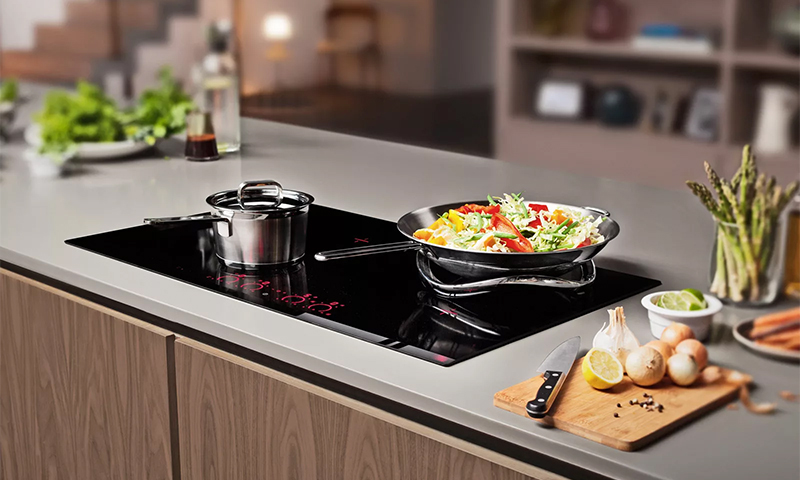Built-in stoves are the norm for a comfortable and functional kitchen. Such panels do not take up much space and fit perfectly into any interior. And what new features they have! They cook themselves, they follow the boiling of the dishes themselves and even regulate the heating of the burners “according to the recipe”. The advantages of the current furnaces are many, but you should not forget about the minuses.
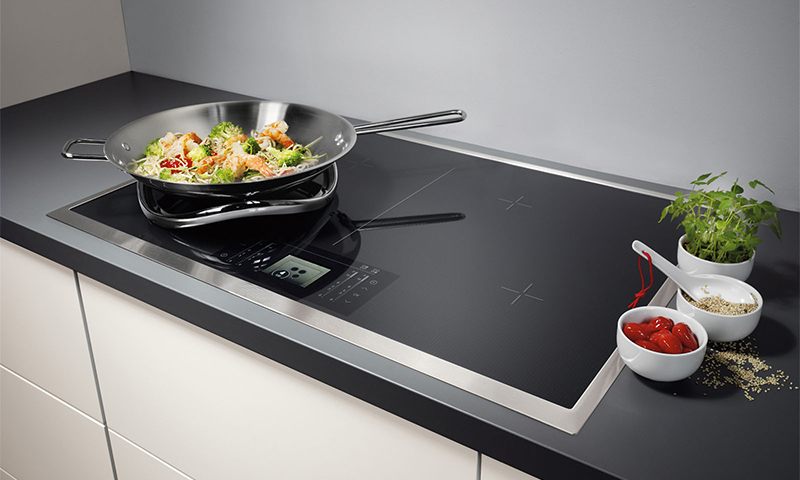
Content:
The best manufacturers of hobs - which company to choose
There are many manufacturers of kitchen appliances, and even more worthy models in their lines. Because of this, it sometimes seems that making the right choice is very difficult. In fact, hobs within their price categories have minimal differences - the main thing is that the brand is proven.
Excellent surfaces are produced by companies that are widely known:
- Piramida;
- Hansa;
- Bosch;
- Hotpoint-Ariston;
- Gorenje.
We have already considered the best representatives from the range of these companies in our recent rating induction hobs. But before you go shopping for your favorite model, let's define the principles of work and the main criteria for choosing a hob.
The principle of operation and the device hob

After tapping into the kitchen countertop, the hob seems to be a continuation of it, which makes it appear very compact in appearance. But under the working surface there is also a metal case, in which the main elements of kitchen appliances are hidden: gazovoda or electric heaters, as well as protective and control electronics.
From above, there are only knobs, buttons or sensors, with the help of which we turn on, turn off and adjust the intensity of heating of the burners. In the most advanced models, processors are already installed - they themselves control the operation of the stove according to predetermined programs.
Different plates have their own principle of operation:
1. In the gas turn the knobs on the control panel opens the valve of the corresponding burner, releasing a jet of blue fuel through it. In order for the stove to catch fire, you need to bring a match to the divider or use the built-in ignition that will knock out the spark and ignite the gas.
2. Most electric stoves instead of burners have heating elements with high resistance. When voltage is applied to them, they become hot, transferring heat directly to the dishes or to the surface of the hob.
3. In the induction plates implemented another system. Here, electromagnetic coils are installed under the glass, which do not heat themselves. But the EM-field created by them heats the bottom of the dish (although for this it must contain a large amount of iron susceptible to magnetic effects).
Types of hobs
Gas

Such cooking surfaces are traditionally more expensive than electric ones, but this purchase is definitely profitable. All due to the difference in tariffs for blue fuel and energy - gas is much cheaper. And even if your house is not connected to the central highway, it is quite possible to use a balloon.
Pros:
- Cheaper to operate;
- High heat output of the burners - dishes are cooked faster;
- You can use almost any dish;
- Smooth flame adjustment;
- No need to wait until the stove heats up.
Minuses:
- Fire hazard;
- Air pollution in the kitchen burning products;
- Soil forms faster on dishes.
Unfortunately, for urban residents whose apartments are located above the 10th floor, the use of gas panels is not available - construction and fire regulations prohibit this directly.
- See also: top gas cooktops
Electric
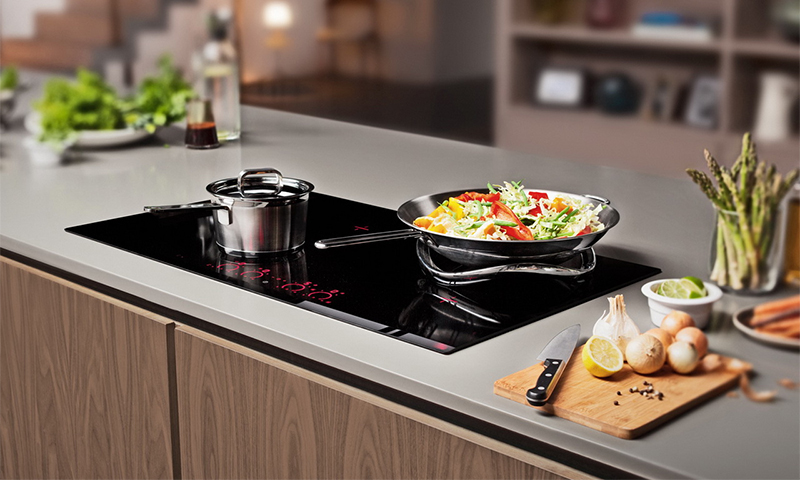
Modern electric stoves look much nicer than their predecessors with open spirals or cast iron pancakes. They fit perfectly into the interior of any kitchen, for which they are particularly fond of the hostess.
In addition, manufacturers offer a variety of heating options for electric burners hidden under glass or glass-ceramic. So, finding the right model for your needs will be easy.
Pros:
- Safer than gas stoves, since there is no open flame;
- Impeccable appearance;
- Comfortable - both in work and in care;
- Extensive management capabilities - up to recipe programming;
- A large set of automatic protection;
- Existence of an extract is not strictly obligatory.
Minuses:
- Not cheap to use, because they consume a lot of energy;
- Requires a separate three-phase line;
- The need to keep the surface in perfect cleanliness and to use dishes with an even bottom.
Combined

These plates are equipped with both gas and electric burners. A great option for homes where there are often interruptions in the light or you have to use bottled gas.
Pros:
- The ability to cook on gas when there is no light, and vice versa;
- More economical than pure electric models;
- There are no special problems with the selection of dishes;
- Often have additional heating surfaces - for example, for a barbecue.
Minuses:
- High price;
- Particularly tough installation rules;
- Combine all the shortcomings of gas and electric panels.
Hob selection options
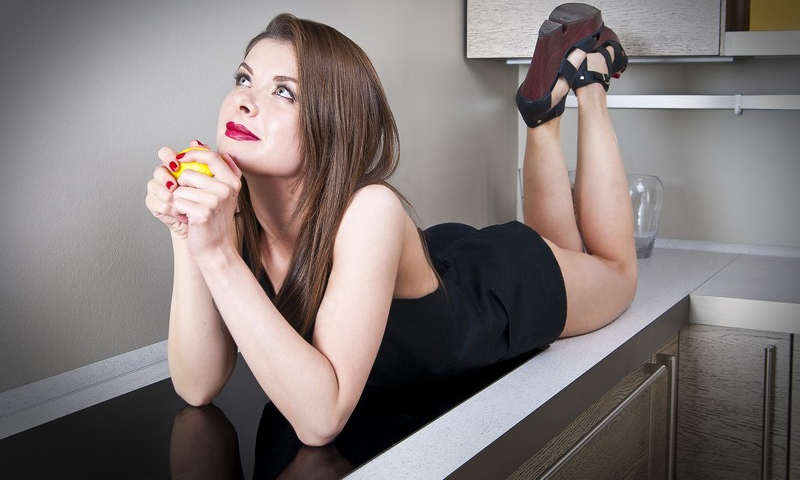
Shape and dimensions
The rectangular shape of the hob is found most often, moreover, this technique is easier to install in the countertop. Most of these plates (with the exception of a few exclusive models) have a length of 60 cm. But the width can vary between 25-90 cm - depending on the number and order of arrangement of the burners.
There are also other panel formats:
1. Round;
2. "Honeycomb";
3. Triangular.
All of these options, except for the hexagonal “honeycomb”, are usually chosen by the owners of spacious kitchens, where they do not have to save square centimeters of the working area.
To determine the optimal panel size for your kitchen, plan the room in advance and make the necessary measurements.
Next you need to do the calculation, focusing on the following recommendations:
1. From the side wall to the stove you should leave a free space of at least 30 cm. Here you will put pots and pans with ready-made dishes.
2. From the cutting table, from 60 cm to 1 meter is given - this is enough for preparing food. You can’t do less, because it is fraught with burns for you, it’s just more undesirable, otherwise you will have to do a lot of unnecessary movements during cooking.
3. The sink should be located 40-60 cm from the side wall so that it does not spray. And do not forget to record the width of the kitchen sink itself - it is also needed for calculations.
It now remains to add all the recommended clearances and the width of individual zones, and subtract the amount from the total length of the wall, which will have a table, sink and stove. The resulting figure - this is the maximum width of your hob.
Let's see what manufacturers offer us:
1. Domino single and dvukhkonforochnye plates come in a standard width of about 30 cm.
2. Three-burner plates can occupy from 45 to 73 cm of working area.
3. A four-classic is usually 60 cm wide, but electric models can go as high as 90-100 cm.
4. Five or six rings are already a choice for a spacious kitchen: there is no such equipment less than 75 cm.
Number of burners
Here you should take into account the composition of the family, and the volume of daily cooking - this will determine the number of burners required for operation:
1. One is an option for a tiny kitchen or summer cottage. Such panels are usually taken in addition to dvukhkonforochnymi.
2. Two - are installed on Domino compact stoves, designed again for small kitchens. This mini-plate is enough for a family of 1-2 people, and if the number of households increases, you can always buy another domino and build it next.
3. Three - somewhat unusual, but very convenient format is quite suitable for the preparation of a full meal. Due to one "retired" burner, the stove can be 15 cm wider than a full-size classic. It really saves space in the kitchen, but at the same time it copes with all the main tasks.
4. Four - a standard stove on which you can cook anything. But as practice shows, even in the house where 4 people live, only 3 burners are simultaneously occupied on the stove. The fourth one is used for “settling” of ready-made dishes or on holidays.
5. Five - takes not so much the number as the format of the additional burner. As a rule, it is very large and powerful or even has the shape of an oval, which allows you to cook dishes in a wide and non-standard dishes.
Surface type
The material from which the visible part of the panel is made determines not only its appearance, but also the features of caring for the equipment you like. The choice is wide enough, but you have to carefully weigh the pros and cons, and honestly answer the question of how carefully in your family are kitchen appliances.
1. Stainless steel
It looks spectacular, fits perfectly into most interiors, while it has sufficient strength. Used mainly for the production of gas panels, but European brands are already trying to use this material in induction stoves.
Alas, to constantly maintain the ideal purity and bright luster of a metal surface is almost impossible - on it every now and then there will appear prints, stains and frozen drops of water. If you decide to take such a plate, look for a product with matting polishing - here the spots are less conspicuous.
2. Enamelling
Good old enamel is used to produce inexpensive gas and electric stoves with pancakes, but it is pleasing to the eye with an abundance of colors. In care, it is unpretentious, if you wash it regularly, however, it is afraid of punctures - with a strong mechanical effect it breaks off in pieces.
3. Glass ceramics
Today it is the most popular material for the production of electrical and gas panels. For the latter, they even invented the technology “gas under glass” - it looks fantastic. But still glass ceramics are typical for electrical appliances.
The beauty is that here not the whole surface is heated, but only the area above the hotplate. That is, you can safely wipe the splashes of fat from the stove and not burn yourself. But this particular feature of glass ceramics also contains its main problem - because of the difference in temperature inside the material, stresses are created.
It should be cold drop to the surface, and the panel can easily split. Unsuccessful falling of a knife or with a roar landed pan also often lead to cracks.
Ceramic glass is capricious in care: it cannot be cleaned with abrasives, and spilled liquids should be removed immediately, especially if they contain sugar. When heated, it destroys the structure of the material, reducing its strength. Why then, with so many shortcomings, it remains the most sought after? Yes, because it heats up in a record 3-4 seconds and at the same time withstands temperatures up to + 600 ° C.
4. Strained glass
It looks no worse than a glass-ceramic surface, and in the care a little less capricious. However, he also needs frequent and thorough cleaning with the use of soft products.
Control
Any cooking surface has its own control system.It can be represented by rotary knobs or “smart” touch panel - the choice depends on the functionality of the plate.
1. We have long been accustomed to the classic handles with which all gas stoves are equipped, although their capabilities are limited by standard on / off and heating control. It is important to pay attention to their location.
The handles must be as far from the burners as possible, otherwise they will heat up and either melt or you will get burned. Also, make sure that the rotary knobs are located closer to the small ring, on which you will not put wide dishes.
2. With the electronic display will have to be mastered and the first time to keep instructions at hand, but the result is worth it. The touch panel allows you to implement in the electric furnace much more functions and control capabilities, such as:
- Maintain the set temperature;
- Programming work time;
- Decrease in power when boiling dishes;
- Automatic on / off burners;
- Preservation of often used modes in memory of the device.
If you get comfortable with all these functions, cooking can be less troublesome. But for experienced housewives such “smart” panels cause irritation - they will have enough temperature control.
Type of burners
Rings of cooking panels are divided not only into gas and electric - there is a classification of burners within these large families. Which of them should be in your model, and without which you can do - you decide. We just talk about their capabilities.
Types of gas burners:
1. Standard round - the most common type of burners, whose heat output depends directly on the diameter.
2. Double crown - due to the additional circular divider provides faster heating of the wide bottom of the dish.
3. Triple crown - even more effective than double.
4. Oval ring - is used for cooking in non-standard cookware (uatyatnitsu, roaster or form for fish). It copes well with the heating of large pans.
5. Coup de feu - “no flame” burner. It, of course, is here, but is not shown outside. The fire heats the bottom of the cast-iron disc, on which the dishes are placed - ideal for languishing and slow extinguishing of dishes.
Electric burners are usually divided not by shape or size, but by the method of heating:
1. Pig-iron pancakes are considered obsolete, not very aesthetic and spend too much time (and energy) to warm up. In order to save a little, you will have to adapt yourself to turn off the oven a little earlier, leaving the dish to reach on the cooling basin.
2. Hi-Light - these tape heaters were not fashionable for long, but are still found in budget models of plates. "Voracious" and require 10-20 seconds to warm up.
3. Halogen - they are easy to recognize by the bright glow of the working circle. Such rings are heated very quickly, transferring heat to the hob, and slowly dimming lights serve as an excellent indication of residual heating.
4. Induction - they can hardly be called hotplates in the full sense of the word. Instead of a heating element under the glass panel, an electromagnetic coil is installed, which heats directly the bottom of the dish. True, for this, it must be perfectly smooth and have a thick layer of ferromagnetic alloy.
Which hob to choose

1. Lonely people and small families living in a house with a tiny kitchen will suit the Domino two-burner panel. Gas or electric - depends on the connectivity to communications.
2. A family of 3-5 people living in a house without a central gas pipeline will be fitted with an electric stove for 3-4 burners. If you are looking for a budget option, purchase a glass-ceramic panel with halogen burners. If you want to reduce the cooking time and at least a little to reduce the cost of electricity, it is better to fork out for an induction model under the tempered glass.
3. For private houses in the suburbs, where there may be interruptions in electricity and gas supply, buying a combination panel will be the answer. A cheaper option - enameled surface with 1-2 cast iron pancakes. If you want something more detailed, take the same enameling or stainless steel with glass-ceramic inserts - halogen rings will hide under it.
4. Have a spacious kitchen and love to cook? Feel free to take a large panel on 5-6 burners - gas, if the highway is connected to you. In other cases, it is necessary to limit electric. The main thing is that it has extended heating zones for large dishes.
How much is the hob
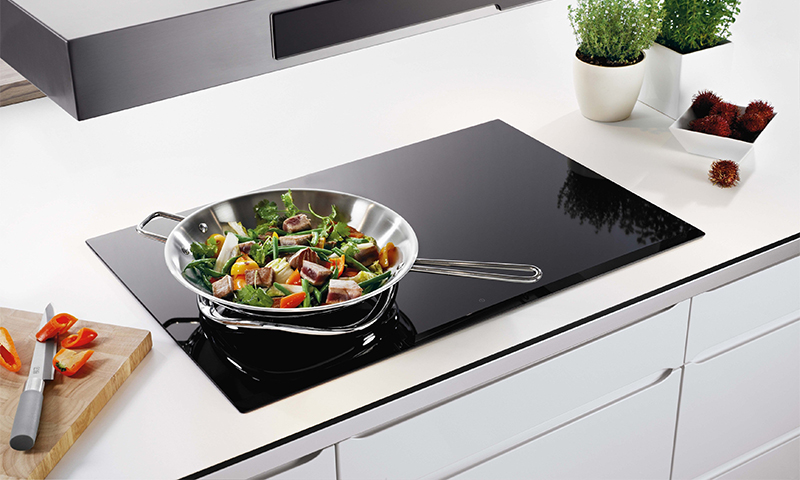
1. Compact dvukhkonforochnye electromoks will cost the buyer from 4500-5000 rubles (for a model with "pancakes") and up to 120-150 thousand for induction. Gas are a bit cheaper - from 4 to 90 thousand rubles.
2. Models with three burners are sold at a price of 8-40 thousand rubles, electric and combined reach 180.
3. Classic 4-ring gas stoves have a fairly wide range of prices - from 5 to 250 thousand rubles. But it has even more electrical analogs - from 6 to 350 thousand. Combined models were somewhere in the middle - they can be purchased in the range of 7 to 290 thousand rubles.
4. Manufacturers offer large gas stoves for 5 rings in the price range of 12-300 thousand rubles. Electrical and combined on average cheaper - 30-220 thousand.
It will be interesting to friends too

